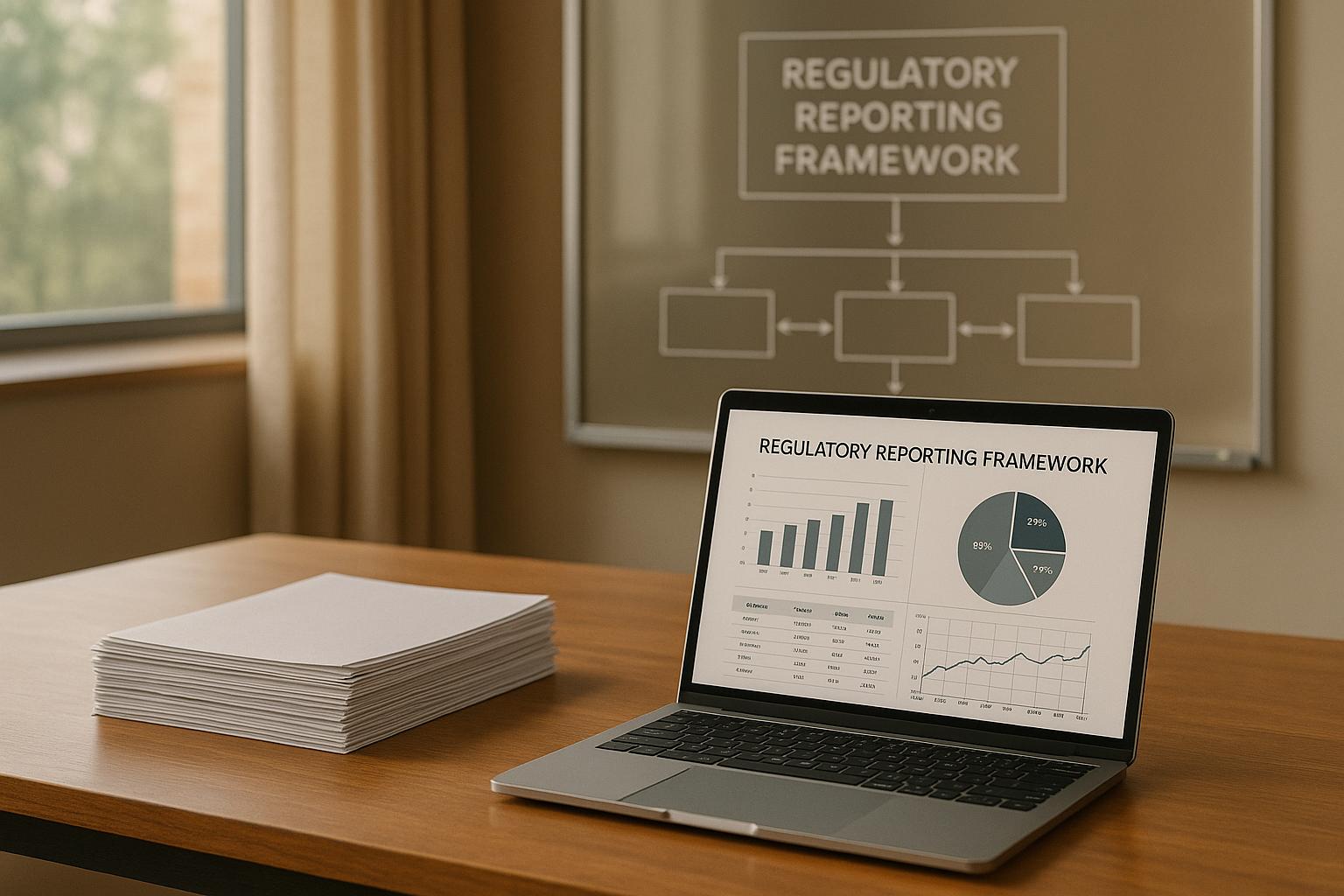Unit Economics: Impact of Churn on Profitability

Churn can make or break your business. Here’s why: It directly affects your revenue, profit margins, and growth potential. High churn means losing customers faster than you can replace them, which increases costs and reduces profitability. On the flip side, reducing churn improves customer lifetime value (CLTV), lowers customer acquisition costs (CAC), and stabilizes recurring revenue.
Key Takeaways:
- Churn rate measures the percentage of customers or revenue lost in a given period.
- High churn = higher costs. Acquiring a new customer is 5x more expensive than keeping an existing one.
- Retention boosts profits. A 5% increase in retention can lead to 25–95% higher profits.
- Early churn is costly. Most customers leave within the first 90 days, often due to poor onboarding or unclear value.
Why It Matters:
- Customer Lifetime Value (CLTV): Lower churn extends customer lifespan, increasing revenue per customer.
- Customer Acquisition Cost (CAC): High churn forces you to spend more on replacing lost customers, reducing ROI.
- Profitability: Reducing churn stabilizes recurring revenue, which directly improves profit margins.
Quick Example:
A SaaS company with 300 customers paying $50/month can earn $11,150 more in 6 months by reducing churn from 6% to 2%. Lower churn means fewer customers leaving and more predictable revenue.
If you want to grow profitably, focus on reducing churn. It’s not just about keeping customers - it's about building a scalable, sustainable business. Let’s break down how churn impacts your business and what you can do to fix it.
Churn Rate Definition and Key Metrics
What is Churn Rate?
Churn rate represents the percentage of customers or revenue lost over a certain period, typically measured monthly or annually. It’s a way to gauge how quickly customers are leaving your business.
There are two main types of churn to track:
- Customer churn rate: This measures the percentage of customers who cancel or don’t renew their subscriptions. It focuses purely on the number of people leaving, regardless of how much revenue they contributed.
- Revenue churn rate: This focuses on the financial loss, calculating the percentage of recurring revenue lost from cancellations or downgrades. It’s especially important since losing high-paying customers can have a much bigger impact than losing lower-paying ones.
Here’s why the difference matters: A company might lose only 2% of its customer base but experience a 5% revenue churn if the departing customers were high-value subscribers. In such cases, low customer churn might look fine on paper, but the financial impact can be severe.
How to Calculate Churn Rate
The formulas for churn are straightforward but differ slightly depending on whether you’re tracking customers or revenue.
-
Customer churn rate: Divide the number of customers lost by the total number of customers at the start of the period, then multiply by 100.
Example: A SaaS company starts January with 500 customers and loses 15 by the end of the month. The churn rate would be:
(15 ÷ 500) × 100 = 3.0%. For annual churn, if the company starts the year with 1,200 customers and ends with 1,140 (losing 60), the churn rate would be:
(60 ÷ 1,200) × 100 = 5.0%. -
Revenue churn rate: Use a similar formula, but focus on the revenue lost. Divide the lost recurring revenue by the total recurring revenue at the beginning of the period, then multiply by 100.
Example: A company starts the month with $100,000 in monthly recurring revenue (MRR) and loses $3,000 due to cancellations or downgrades. The revenue churn rate would be:
($3,000 ÷ $100,000) × 100 = 3.0%.
These two metrics often tell different stories. A business might experience the same percentage of customer and revenue churn, but more often than not, the financial impact varies depending on which customers are leaving.
Why Churn Metrics Matter
Churn rate is a strong indicator of customer satisfaction. If customers are leaving in large numbers, it could point to issues with your product, service, or overall value proposition. But churn isn’t just about satisfaction - it directly affects your ability to grow and plan for the future.
For subscription-based businesses, high churn means unstable revenue, making it harder to budget for investments or expenses. Since a significant portion of revenue (typically around 65%) often comes from existing customers, high churn can wipe out organic growth opportunities.
Financially, churn also impacts profitability. The longer a customer stays, the more profitable they become because their acquisition cost is spread over time. High churn rates can offset gains from new customer acquisitions, leading to stagnant or even declining growth.
"The lower your churn rate, the higher your customer lifetime value, and the more you can spend to acquire customers while still maintaining a positive ROI." - Lincoln Murphy, Sixteen Ventures
The connection between churn and Customer Lifetime Value (CLV) is striking. For instance, a company with a 6% monthly churn sees an average customer lifetime of roughly 16.7 months. But reducing churn to 2% extends that lifetime to 50 months - a dramatic increase in the revenue each customer brings over time.
For growth-stage companies, churn is a critical metric that investors scrutinize closely. An annual churn rate under 5% is often seen as a benchmark for long-term success, while the average across subscription businesses is about 3.27%.
How Churn Affects Core Unit Economics
Churn plays a critical role in shaping your core financial metrics, directly influencing the health of your unit economics. When customers leave, the effects ripple through your business, impacting everything from customer value to acquisition costs. Let’s dive into how churn affects key financial metrics that drive your business’s economic engine.
Customer Lifetime Value (CLTV)
Churn has a direct and dramatic impact on Customer Lifetime Value (CLTV). For instance, with a 6% monthly churn rate, the average customer sticks around for only 16.7 months. Lower that churn to 2%, and the average customer lifespan jumps to 50 months - tripling CLTV. If each customer pays $100 per month, this means a leap from $1,670 to $5,000 in lifetime revenue per customer.
This highlights the importance of retention. High churn doesn’t just lower individual customer value - it also cuts off opportunities for upsells and cross-sells, which are essential for maximizing revenue. Over time, the financial gap widens. A company with 10% churn will struggle to compete with a rival at 2.5% churn, even if both spend the same on acquiring customers. Why? Because the competitor’s customers generate more value over their longer lifespan. Extending customer lifespans is key to driving strong unit economics.
Customer Acquisition Cost (CAC)
High churn also inflates Customer Acquisition Cost (CAC). When customers leave frequently, you’re forced to spend more on marketing and sales just to replace them, leaving little room for actual growth.
Here’s the problem: when churn is high, a significant chunk of your marketing budget goes toward replacing lost customers instead of acquiring new ones. This makes each marketing dollar less effective. For example, a company spending $50,000 monthly on customer acquisition sees drastically different returns depending on churn. With low churn, most customers stick around long enough to generate significant revenue. With high churn, many leave before the acquisition cost is recouped, driving up the effective CAC.
Early churn is especially damaging. Many customers churn within the first 90 days due to poor onboarding or unclear value. When this happens, you’ve spent money acquiring customers but gained little in return. For growth-stage businesses, this dynamic can make scaling efficiently almost impossible.
Recurring Revenue and Profit Margins
Churn eats away at Monthly Recurring Revenue (MRR) and Annual Recurring Revenue (ARR), creating instability that directly impacts profit margins. Each customer who cancels leads to an immediate drop in predictable revenue.
Margins take a hit from both lost revenue and the increased costs of replacing churned customers. For example, a SaaS business with 300 customers paying $50 per month generates $15,000 in MRR. Reducing churn by just 4% could add $11,150 in revenue over six months. Since the cost of serving existing customers is usually low, most of that additional revenue boosts profit margins.
| Churn Rate Impact | 3-Month Revenue Loss | 12-Month Revenue Loss |
|---|---|---|
| 2% monthly churn | $900 | $3,600 |
| 5% monthly churn | $2,250 | $9,000 |
| 10% monthly churn | $4,500 | $18,000 |
Based on $15,000 starting MRR
Unstable recurring revenue makes it difficult to plan and invest in growth initiatives. High churn forces businesses to constantly replace lost revenue, leaving little room for strategic planning. On the other hand, predictable recurring revenue creates a solid foundation for long-term growth.
Research by Bain & Company shows that improving retention by just 5% can increase profits by 25% to 95%. This is because retained customers continue generating revenue without requiring additional acquisition costs.
For growth-stage companies, the relationship between churn and margins often determines whether they can achieve profitability. Low churn means stable revenue and healthier margins. High churn, however, leads to constant spending on replacements, keeping margins under pressure. Addressing churn isn’t just about retaining customers - it’s about building a sustainable, profitable business model.
The beauty of reducing churn is that it creates compounding benefits. Lower churn boosts CLTV, reduces CAC, and stabilizes recurring revenue. Together, these improvements strengthen unit economics and pave the way for better profit margins.
Churn and Business Valuation
After exploring how churn impacts core unit economics, let's shift focus to its influence on business valuation. Churn rate plays a pivotal role in shaping customer loyalty, revenue stability, and overall valuation. For growth-stage companies, potential buyers view churn as a key indicator of these factors, as well as the company’s long-term growth prospects. Grasping this connection can be the difference between commanding top-tier valuations or settling for less favorable offers. This underscores why churn is such a critical metric for investors.
Research Findings on Churn and Valuation
Research from Bain & Company reveals that even a modest 5% increase in customer retention can lead to a substantial boost in profits. Retained customers not only provide recurring revenue but do so without the added expense of acquiring new ones. This compounding effect is something investors value highly.
In the U.S. SaaS industry, churn benchmarks heavily influence valuation multiples. Companies with annual churn rates below 5% often secure higher multiples, while those with rates exceeding 10% typically face valuation penalties. For context, B2B SaaS companies average an annual churn rate of about 3.5%, and those meeting or surpassing this benchmark are generally viewed more favorably by investors.
Let’s consider an example: an enterprise software company reduces its annual churn from 8% to 4%. This change doubles the customer lifetime value (CLTV) - jumping from 12.5 years to 25 years. For a customer paying $10,000 annually, the lifetime value increases from $125,000 to $250,000. This improvement in retention not only enhances CLTV but also boosts profitability, both of which are critical drivers of higher valuation multiples.
| Company Stage | Typical Churn Rate | Impact on Valuation |
|---|---|---|
| Startup (monthly) | ~5% | Lower multiples, higher risk perception |
| Established (annual) | 5-7% | Higher multiples, more stable revenue |
| Enterprise SaaS | <5% (annual) | Premium multiples, strong investor confidence |
High churn rates often signal issues with product-market fit or customer satisfaction - both of which increase perceived risk for investors. This can lead to valuation discounts for businesses with unstable revenue streams.
Investor Confidence and Planning
Churn doesn’t just affect valuation - it also shapes investor confidence. A lower churn rate demonstrates operational efficiency and strong customer retention, which are critical for reducing risk and ensuring predictable cash flow. These factors make a business more appealing to investors, as they support accurate revenue forecasting, expansion plans, and favorable funding or exit terms.
Companies with low churn can dedicate more resources to growth rather than replacing lost customers. Factors like longer contract durations, high product utility, and customer acquisition through referrals or organic channels all contribute to lower churn and, in turn, higher valuations. Investors also scrutinize churn across different customer segments, acquisition channels, and contract terms to better understand a company’s overall health.
For growth-stage companies eyeing an exit, reducing churn is a key strategy for boosting value. Firms like Phoenix Strategy Group specialize in analyzing churn drivers, implementing retention strategies, and optimizing financial operations. Their expertise in FP&A, data engineering, and M&A support helps businesses enhance customer lifetime value, improve revenue forecasts, and make a stronger case to investors - all of which contribute to maximizing valuation.
Timing matters, too. Companies that address churn early in their growth phase often see compounding benefits that positively influence long-term valuation. On the other hand, delaying these efforts can make it harder to show meaningful improvements within the typical evaluation window.
sbb-itb-e766981
Methods to Reduce Churn and Improve Profitability
Reducing churn is a direct path to boosting profitability, especially when you consider that acquiring new customers can cost 5–7 times more than retaining existing ones. For growth-stage businesses, focusing on retention isn't just smart - it's essential.
Retention Strategies and Their Financial Benefits
Retention strategies that rely on data can help businesses address issues before customers decide to leave. Predictive analytics, for example, has proven to be a game-changer. Companies like Groove have used predictive models and targeted outreach to cut churn by as much as 71%. By analyzing customer behavior, engagement, and usage data, these tools can identify accounts at risk of leaving early.
Another effective tactic is improving the onboarding process. Many customers leave within the first 90 days due to poor onboarding experiences. Businesses that invest in personalized training, regular follow-ups, and celebrating milestones often see much better retention rates.
Personalized engagement also plays a big role. Instead of sending out generic messages, successful companies segment their customers and tailor communications based on factors like usage habits, industry, or company size. This approach not only reinforces the product's value but also builds stronger customer loyalty.
The financial upside of retention is huge. Research from Bain & Company shows that increasing customer retention by just 5% can lead to a 25% to 95% boost in profits. Retained customers not only provide steady revenue but often expand their usage over time, reducing the need to constantly chase new customers.
Take PTC Velocity Global Sales as an example. In 2022, they revamped their retention strategy by focusing on customer targeting and setting minimum annual recurring revenue (ARR) thresholds. This shift increased their retention rates from 60–70% to over 90% in just one year, helping them hit their four-year retention goal ahead of schedule. This approach not only stabilized their recurring revenue but also significantly improved profitability.
These methods show that retention doesn't just stabilize revenue - it strengthens the overall financial health of a business.
Practical Steps to Reduce Churn
The first step in reducing churn is effective customer segmentation. By analyzing behavior, demographics, and engagement levels, businesses can pinpoint which groups are most at risk and why. From there, proactive customer support can address potential issues before they lead to cancellations. For example, reaching out to customers with declining usage, those who haven’t logged in recently, or those expressing frustration can make a big difference.
Retention campaigns work best when they target specific problems rather than offering one-size-fits-all solutions. For instance, if a SaaS company notices that customers who don’t integrate their tools churn more often, it’s better to offer integration support rather than a blanket discount.
Another common churn issue is failed payments. Payment recovery systems can address this by automating retries, sending reminders, and updating payment methods without manual intervention. These systems can reduce churn by 2–5% for subscription-based businesses.
How Financial Advisory Services Can Help
Operational improvements are even more effective when paired with expert advisory services. Phoenix Strategy Group is a great example of this, offering a mix of churn analysis, financial modeling, and strategic guidance to help businesses grow sustainably.
Their process starts with data engineering and analytics. Phoenix Strategy Group helps companies clean up their sales and marketing data, create meaningful customer metrics, and build dashboards to track churn patterns. As they put it:
"When you put the Right Data in front of an Empowered Team, they get better."
– Phoenix Strategy Group
They also offer a "Smooth Operator" program, which focuses on creating self-sustaining systems, revenue engines, and forecasting tools while aligning teams across sales, marketing, customer success, and product development. These efforts lay the groundwork for effective churn reduction.
Advanced financial modeling is another key service. By forecasting how different retention strategies impact metrics like customer lifetime value (CLTV), cash flow, and business valuation, Phoenix Strategy Group helps companies make smarter decisions about where to allocate resources. For businesses preparing for funding rounds or acquisitions, these insights can be invaluable. Investors often scrutinize churn rates closely, so showing improvements in retention can significantly enhance valuation discussions.
Additionally, workflow automation tools - such as HubSpot integrations - support personalized engagement strategies. Automated systems can send targeted content to disengaged users, schedule check-ins with high-value accounts, or escalate at-risk customers to dedicated success managers.
Conclusion: Churn's Role in Profitability and Long-Term Growth
Churn is a game-changing metric for growth-stage businesses - it can either fuel success or hinder progress. The numbers are striking: businesses with annual churn rates of 5% or less set themselves up for long-term profitability, while those with higher rates often struggle to maintain sustainable growth.
As we've discussed, acquiring new customers is far more expensive than keeping existing ones. Every small reduction in churn directly improves financial performance, leading to better unit economics. Over time, this advantage compounds, creating significant value for businesses that focus on retention.
What makes churn management so impactful is its ripple effect on profitability. Lower churn doesn’t just protect revenue - it reshapes the entire business model. When churn decreases, customer lifetime value rises, acquisition costs become more efficient, and recurring revenue becomes more stable. This creates a positive feedback loop, freeing up resources that can be reinvested into growth.
Retention strategies also play a key role in boosting business valuation. For example, SaaS companies with churn rates under 5% often achieve exit multiples of 8–12× revenue, while higher churn rates can drastically lower valuations. For businesses eyeing funding rounds or exits, strong retention metrics aren’t just helpful - they’re essential to maximizing enterprise value.
The way forward lies in a data-driven strategy for retention. Companies that leverage predictive analytics, enhance onboarding, and proactively support their customers consistently outperform those that accept churn as a given. Importantly, the best organizations treat retention as a company-wide priority, not just a task for the customer success team. These efforts highlight why managing churn effectively is a strategic necessity.
For growth-stage companies, the takeaway is straightforward: managing churn effectively is the key to breaking free from the costly cycle of constant customer acquisition. It’s the foundation for building a profitable, scalable business that attracts investors and achieves premium valuations. The companies that embrace this today are the ones poised to lead tomorrow.
FAQs
How does lowering churn affect Customer Lifetime Value (CLTV) and profitability?
Lowering churn plays a critical role in boosting Customer Lifetime Value (CLTV) and overall profitability. When customers stick around longer, they contribute more revenue over time, directly increasing their lifetime value. Plus, with fewer customers leaving, you can distribute your acquisition costs over a longer period, which improves profit margins and eases the constant need to bring in new customers.
Prioritizing retention helps businesses build a growth model that's more stable and less reliant on aggressive acquisition strategies. For companies in their growth phase, understanding how churn affects unit economics is essential for scaling in a financially sustainable way.
How can subscription-based businesses identify and reduce early customer churn?
To tackle early customer churn, start by diving into your customer data. Look for patterns in behaviors that might signal a risk of cancellation - like how often they use your product, their engagement levels, or how frequently they reach out for support in those crucial first weeks. Gathering direct feedback through surveys or feedback forms can also shed light on why customers decide to leave.
Once you've identified potential issues, focus on enhancing the onboarding process. Make sure new customers immediately see the value your product or service brings. Offer personalized touches like one-on-one support, tutorials, or regular check-ins to guide them through those initial stages. Keep a close eye on customer satisfaction and address any concerns quickly to foster loyalty and keep churn rates low.
Why do investors focus on churn rate when assessing a company's growth and valuation?
Churn rate plays a crucial role for investors as it reveals how effectively a company keeps its customers over time. When churn rates are high, it often points to problems like dissatisfied customers or a mismatch between the product and market needs - issues that can slow down long-term growth.
High churn also eats into recurring revenue, which makes it harder for a business to grow profitably. On the flip side, for companies in their growth phase, a low churn rate highlights loyal customers and a reliable base for steady expansion - key factors that attract investors and boost a company's valuation.




